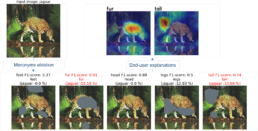WHAT ARE COOKIES?
Cookies are small text files that the sites visited by the user send and record on the user’s computer or mobile device, to then be re-transmitted to the same sites on the next visit. Precisely thanks to cookies, the site remembers the user’s actions and settings (such as, for example, login data, the chosen language, font size, other display settings, etc.) so that they do not have to be indicated again when the user returns to visit the same site or navigates from one page to another of it. Cookies, therefore, are used to perform computer authentication, session monitoring and storage of information regarding the activities of users who access a site and can also contain a unique identification code that allows you to keep track of user navigation within of the site itself for statistical or advertising purposes. While browsing a site, the user can also receive cookies from sites or web servers other than the one he is visiting on his computer or mobile device (so-called “third-party” cookies). Some operations could not be performed without the use of cookies, which in some cases are therefore technically necessary for the site to function itself.
There are various types of cookies, depending on their characteristics and functions and these can remain on the user’s computer or mobile device for different periods of time: the so-called session cookies, which are automatically deleted when the browser is closed; the so-called persistent cookies, which remain on the user’s device up to a pre-established deadline.
According to the legislation in force in Italy, the express consent of the user is not always required for the use of cookies. In particular, the so-called cookies do not require this consent. “technical”, i.e. those used for the sole purpose of carrying out the transmission of a communication over an electronic communications network, or to the extent strictly necessary to provide a service explicitly requested by the user. In other words, these are cookies that are essential for the site to function or necessary to perform activities requested by the user.
Among the technical cookies, which do not require express consent for their use, the Guarantor for the protection of personal data (cf. Prov. Gen. “Identification of simplified procedures for the information and the acquisition of consent for the use of cookies” – May 8, 2014) also includes:
“Analytics cookies” where used directly by the site manager to collect information, in aggregate form, on the number of users and how they visit the site itself,
navigation or session cookies (to authenticate, to make a purchase, etc.),
functionality cookies, which allow the user to navigate according to a series of selected criteria (for example, the language, the products selected for purchase) in order to improve the service rendered to the same.
For cookies cc.dd. profiling, vice versa, i.e. those aimed at creating profiles relating to the user and used in order to send advertising messages in line with the preferences expressed by the same in the context of surfing the net, a prior consent of the user is required.
WHAT TYPES OF COOKIES DO WE USE?
This website does not use profiling cookies.
In particular, this website uses:
Technical cookies, i.e. navigation or session cookies and strictly necessary for the functioning of the site or to allow the user to take advantage of the contents and services requested by them.
Cookie Analytics, which allow you to understand how the site is used by users. These cookies do not collect information on the identity of the user, nor any personal data. The information is treated in aggregate and anonymous form.
Third-party cookies, i.e. cookies from sites or web servers other than this website and used for the purposes of these third parties.
By visiting a website you can receive cookies both from the site visited (“owners”) and from sites managed by other organizations (“third parties”). A notable example is represented by the presence of “social plugins” for example Facebook, Twitter, Google+. These are parts of the visited page generated directly by the aforementioned sites and integrated into the page of the host site. The most common use of social plugins is aimed at sharing content on social networks.
The presence of these plugins involves the transmission of cookies to and from all sites managed by third parties. The management of information collected by “third parties” is governed by the relative information to which reference is made. To ensure greater transparency and convenience, the web addresses of the various information and methods for managing cookies are shown below.
Facebook information
Facebook configuration: Log in to your account. Privacy section.
Informational Twitters
Twitter configuration
Google+ information
Google+ configuration
Informative Youtube
Youtube configuration
Among the Analytics cookies, the cookies of Google Analytics, a web data analysis service of Google Inc. (“Google”), stand out in particular.
They enable the functioning of Google Analytics and help website operators to analyze the activities on the site such as for example the number of visitors, the browsing criteria, the services used and the average stay times, and other data that help us to improve the usability of content.
In case of activation of IP anonymization on this website, your IP address will first be truncated by Google within member states of the European Union or other signatory states to the Agreement on the European Economic Area. Only in exceptional cases is the full IP address sent to a Google server in the USA and truncated there. IP anonymous is activated on this website. On behalf of the operator of this website, Google will use the information for the purpose of evaluating your use of the website, compiling reports on website activity for website operators and providing them with other services relating to website activity and internet usage.
The IP address transmitted by Google within the scope of Google Analytics will not connect your IP address with any other data held by Google. In any case, you can refuse the use of cookies by selecting the relative setting on your browser, however, bear in mind that this could prevent you from fully using all the functions of this website. You can also prevent Google from acquiring the data generated by the cookie and relating to your use of the website (including your IP address), as well as from processing this data by Google, by installing the browser plug-in available at following link.
The information obtained through cookies is not used to identify users. Cookies are not used for purposes other than those described above.
COOKIE SETTINGS
Below it is possible for the user to make a choice and specifically indicate which cookies to install.
User preferences in relation to cookies will be reset if different devices or browsers are used to access the site.
Technical cookies do not require prior consent from the user for their use.
Navigation or session cookies: strictly necessary for the functioning of the site or to allow the user to take advantage of the contents and services requested by them.
Cookie Analytics: allow you to understand how the site is used by users. These cookies do not collect information on the identity of the user, nor any personal data. The information is treated in aggregate and anonymous form.
Third-party cookies: With regard to third-party cookies, these are cookies from different websites or web servers, used for the purposes of these third parties. ExchangeSulMercato is not able to exercise specific control over these subjects and the related cookies.
To obtain information on these cookies and their characteristics and operating methods, use the links above or contact these third parties directly. The use of third-party cookies can normally be inhibited by the user also through the appropriate option present in their navigation program (browser): in this regard, see the indications above.
SAVE CHANGES
The modification or confirmation of the preferences expressed regarding the use of the site’s cookies can take place at any time by the user, by accessing this page through the appropriate link at the bottom of the website.
In addition to this procedure, the user can authorise, block or delete (in whole or in part) cookies also through the specific functions of his navigation program (browser): however, in the event that all or some of the cookies are disabled it is possible that the site cannot be consulted or that some services or certain functions of the site are not available or do not work properly and/or the user could be forced to modify or manually enter some information or preferences each time he visits the site.
For more information on how to set preferences on the use of cookies through your browser, you can consult the relative instructions:
Internet Explorer
Firefox
Chrome
Opera
Safari
More information and details on the various types of cookies, their methods of operation and characteristics can be found on the site, with free access, AllAboutCookies.

